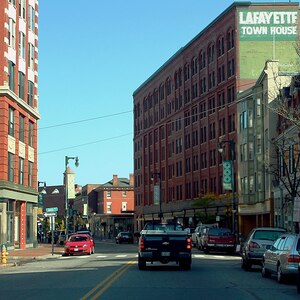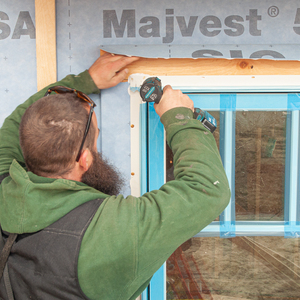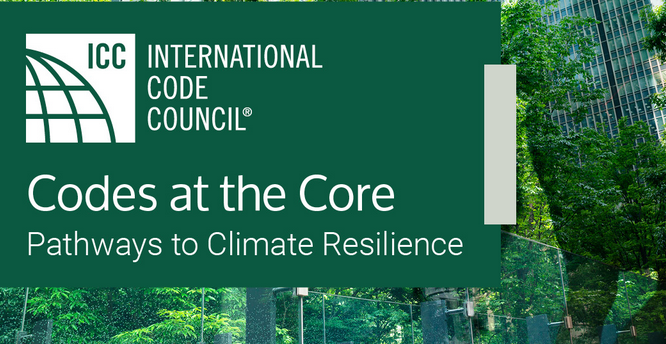
The International Code Council is stepping up efforts to convince more government officials to adopt the newest version of the International Energy Conservation Code.
By the end of 2023, the code-writing organization would like to see one-third of all Americans covered by the 2021 IECC. The campaign, called “Code on a Mission,” cites the energy efficiency gains in the most recently energy code, and the need to cut greenhouse gas emissions.
The ICC publishes a new version of the IECC, as well as the International Residential Code, every three years. The “model code,” which has to be adopted by state or local building officials before it can be enforced, covers a range of performance features in new construction. The amount of insulation in walls and roofs, U-factors for windows and skylights, and permissible air leakage rates all are addressed.
In a prepared statement, the ICC said the U.S. Department of Energy has found that the residential portions of the 2021 IECC “provide a 9.4% improvement in energy use and an 8.7% improvement in carbon emissions over the 2018 IECC, saving homeowners an average of $2,320 over the life of a typical mortgage.” Since 2006, efficiency gains in the IECC add up to roughly 40%, the ICC said.
Support for the initiative comes from several groups, according to the ICC, including Architecture 2030, the Northeast Energy Efficiency Partnerships, the National Electrical Manufacturers Association, and the Institute for Market Transformation.
To advance the effort, the ICC says it has developed a toolkit describing the benefits of the 2021 IECC, including reductions in greenhouse gas emissions and energy savings.
The latest report from the Intergovernmental Panel on Climate Change detailing the irreversible damage of climate change may give the campaign a boost. But trade groups like the National Association of Home Builders have resisted more stringent energy codes on grounds that they make houses too expensive. And some government and local authorities are slow in adopting new versions of the code as they are published. An online summary of code adoptions by state shows that some states are still using the 2009 version of the IECC, while many others are standing with those published in 2015 and 2018. Some states have no statewide code at all.
California, on the other hand, has adopted even more stringent energy requirements than the 2018 IECC and some states leave it to local communities to decide.
“Reducing society’s GHG [greenhouse gas] emissions is no longer a ‘nice-to-do’ but rather a critical necessity,” said Ryan Colker, the ICC’s vice president of innovation, “and governments, communities and the building industry as a whole are increasingly recognizing the contributions of buildings.”
Scott Gibson is a contributing writer at Green Building Advisor and Fine Homebuilding magazine.
Weekly Newsletter
Get building science and energy efficiency advice, plus special offers, in your inbox.















6 Comments
I think you have to reopen your physics book and fully understand the laws regarding the conservation of energy, you know it cannot be created or destroyed........and then stop spreading the gov lies. We all use the free energy that the world and universe provides, so we should not be finding better ways for all or us to pay for something that is ultimately free.
“[Deleted]”
> National Association of Home Builders have resisted more stringent energy codes on grounds that they make houses too expensive.
I think that the NAHB has done a good job of showing that many individual provisions have a horrible ROI and shouldn't be implemented. The same money could be spent on things that are better for the environment. Why did the ICC produce such a mixed bag?
https://www.nahb.org/advocacy/top-priorities/building-codes/code-adoption-kits/2021-international-energy-conservation-code
The ROI is bad because utilities are highly regulated. If rates were allowed to fluctuate with demand then you can be assured that customers would demand better performing homes.
> highly regulated
But also poorly regulated. How is it that we are still burning very environmentally harmful and deadly coal?
I think it's important that some amount of demand pricing and/or load management is mandated. But poor implementation in Texas may have set that back. I'm not aware of the IECC accounting for demand pricing or time-of-use in their model building codes.
Building better should be everyone's goal. That 100% includes the energy efficiency of our buildings. Better also includes adoption of materials and practices that have less negative impacts. Carbon pricing is an easy solution to flip the economic benefits towards renewables and away from inefficiency/outdated methods. Passing that legislation, however, is another story...
Log in or create an account to post a comment.
Sign up Log in